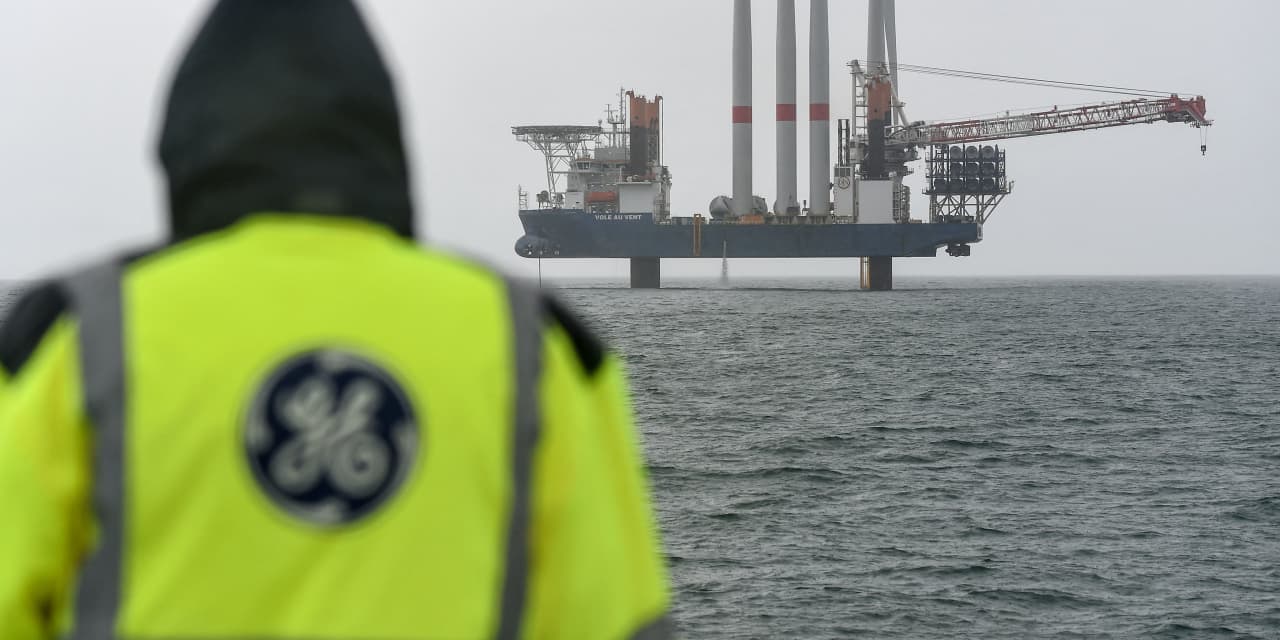The offshore wind industry has struggled mightily this year, as multiple companies have canceled contracts to build projects in the U.S. as costs to develop them have surged. On Tuesday, investors got some good and bad news about the industry—pointing a way forward for offshore wind but also raising more questions about its near-term profitability.
The bad news came from
General Electric
(ticker: GE), whose business making offshore wind turbines has been hurt by rising inflation for the materials it uses. GE is one of the few American companies involved in the wind industry, which is mostly centered in Europe and China. GE built the turbines for the first commercial-scale project currently going up off of Martha’s Vineyard. But CEO Larry Culp said on a conference call with analysts after its earnings report on Tuesday that the offshore wind division is expected to lose $1 billion this year. It will lose a similar amount in 2024 but see “substantially improved cash performance,” he said.
GE has a backlog of projects that it’s working through where the economics are unfavorable, but the company expects better results in the future. “We know the industry is ready for a reset,” Culp said. “We think we can make a much better business with offshore wind, but we’re staring at some challenges that we need to address here in the fourth quarter and in 2024, for sure.” GE is planning to spin out its energy business, including offshore wind, into a new company called GE Vernova, next year.
GE did get some positive news on Tuesday: New York state is investing $300 million in plants operated by GE and a company out of Denmark to manufacture wind equipment. New York’s announcement was part of a larger plan to add 6.4 gigawatts worth of new renewable electricity capacity, including contracts with wind developers to add four gigawatts of offshore wind. Gov. Kathy Hochul says the new projects should be able to provide 12% of New York’s electricity in 2030.
The announcement is a significant step at a time when offshore projects up and down the East Coast have been delayed or canceled. New York itself just denied a request from
BP
(BP) and
Equinor
(EQNR) to pay the companies more for power from two previously-approved projects in the state. Projects those companies have been working on for years could be in jeopardy, given that inflation has made the cost of installing them much higher.
Molly Morris, president of Equinor Renewables Americas, said in a statement that “these projects must be financially sustainable to proceed. Equinor and BP will assess the impact of the State’s decision on these projects.” Hochul also dealt the industry a setback last week by vetoing a bill that would have expedited construction of an offshore transmission cable in Long Island.
But Tuesday’s wind announcement offers a potentially profitable path forward for the companies that won the new contracts. They include German power company
RWE
(RWEOY), French oil major
TotalEnergies
(TTE), a subsidiary of British power company
National Grid
(NGG), and privately held renewable energy company Copenhagen Infrastructure Partners.
The new contracts are at higher power rates than ones that the state and utilities signed just a few years ago, which will likely mean higher electricity prices for residents. In its release, the state says that the new projects are likely to add 2.7%, or about $2.93 per month, to the average electricity bill. A spokesperson did not respond to a request for comment on how it came to that figure. The all-in development costs of the offshore wind projects are 59% higher than the development costs of onshore wind and solar projects that the state also announced on Tuesday.
Analysts at equity research firm Redburn Atlantic think the New York offshore wind deals “represent a healthy basis for developers to proceed offshore New York, in contrast with some existing agreements.” In a very difficult year for offshore wind, they offer some hope for the future.
Write to Avi Salzman at [email protected]
Read the full article here











Leave a Reply